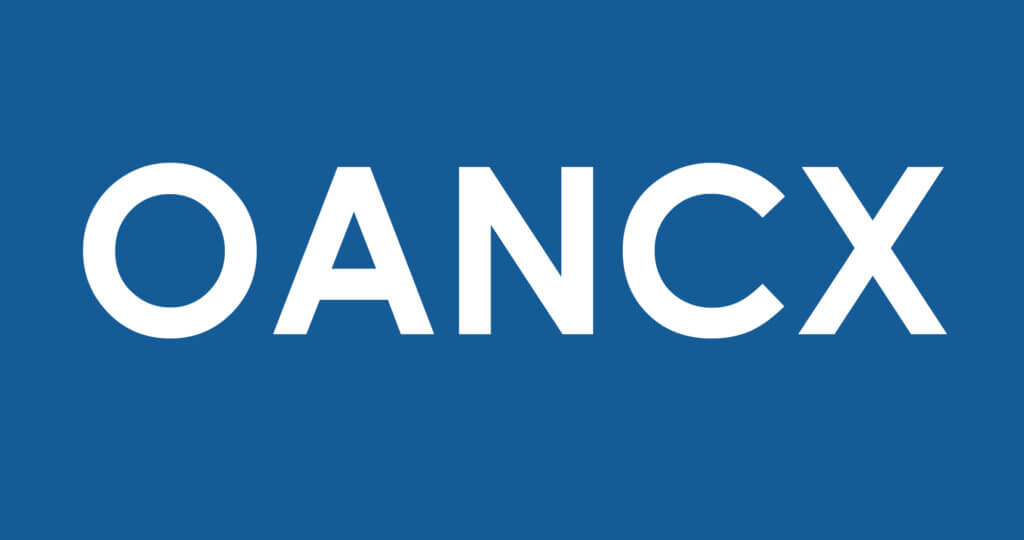Oakmark Bond Fund – Institutional Class
Average Annual Total Returns 06/30/21
Since Inception 06/10/20 5.33%
1-year 5.69%
3-month 1.78%
Gross Expense Ratio: 2.82%
Net Expense Ratio: 0.59%
Expense ratios are based on estimated amounts for the current fiscal year; actual expenses may vary.
The Fund’s Adviser has contractually undertaken to waive and/or reimburse certain fees and expenses so that the total annual operating expenses of each class are limited to 0.64%, 0.59%, and 0.44% of average net assets, respectively. The contractual advisory fee waiver agreement is effective through January 27, 2022.
Past performance is no guarantee of future results. The performance data quoted represents past performance. Current performance may be lower or higher than the performance data quoted. The investment return and principal value vary so that an investor’s shares when redeemed may be worth more or less than the original cost. To obtain the most recent month-end performance data, view it here.
OAKMARK BOND FUND – ONE-YEAR ANNIVERSARY
Earlier in the month, we celebrated the Oakmark Bond Fund’s first birthday. Although the Fund is still in its infancy, we are pleased with its start and optimistic about its future. Over our first year, the Fund earned a 5.57% (net of fees) return for our investors as of June 10, 2021, placing it in the top 15th percentile in the Morningstar Intermediate Core Plus Category. Most importantly, we believe we have achieved our objective of both protecting and growing our investors’ capital by using disciplined value investing–and we did so during one of the most extraordinary (and volatile) market periods in the past decade. Given the Fund’s recent anniversary—and the historical period of time in which it occurred—we wanted to reflect on this eventful year and provide some insight on how our positioning has evolved.
The launch itself feels like an eternity ago, possibly due to the historic backdrop in which it occurred. The June 10, 2020, inception date was arguably the height of the Covid-19 crisis, before much was known about the disease or its possible remedies. U.S. daily case counts were beginning to increase once again after a reprieve in April and May and the delivery of a vaccine remained highly uncertain. Periods of high volatility sow the seeds for bold market narratives, and June 2020 was no exception. The headlines around our inception date reflected doom and gloom: “Credit markets signal the U.S. risks heading toward a financial crisis” (CNBC) or “How bad it might get? Think the Great Depression” (Bloomberg). Given the scope of the crisis and the resulting market volatility, it might have been reasonable to delay the Fund’s launch, given the perceived risks in the market. However, at Oakmark, we don’t view risk so one dimensionally. To be sure, at that time, volatility-based risk models were all flashing “danger.” But we define risk as the amount of discount embedded in a security’s market price when compared with our long-term view of intrinsic value. The larger the discount to our intrinsic value, the lower the risk and vice versa. Using our definition, the plummeting valuations in spring 2020 meant that the risk profile across a large portion of our investable universe was actually greatly reduced. As a result, not only did we push ahead with the launch, we went on the offensive. We made investments in the deeply discounted travel and leisure sectors, we found opportunities in energy, and we even invested in one restructuring event (more to come on this one). Our opportunistic strategy drove the majority of our outperformance versus our peers.
Fast forward to our one-year anniversary, media headlines have now moved to the opposite extreme: “10% GDP growth? The U.S. economy is on fire, and is about to get stoked even more” (CNBC). To think, we went from headlines about an economic depression to an economic boom in one 12-month period! This whiplash change in sentiment should put to rest the idea that anyone can predict the future. The past year has been a constant reminder that forecasting is very difficult, so build an investment process that doesn’t rely on fortunetelling.
In selecting the bonds for our Fund, we don’t rely on short-term macro forecasting. Instead, we analyze individual company and security fundamentals and capitalize on disconnects between price and intrinsic value. This is the same process that has been used across all of the Oakmark Funds for decades. Perhaps the best example of this so far in our Fund is our investment in an oil and gas company, Chesapeake Energy, undergoing a full balance sheet restructuring. Our analysts had followed Chesapeake for many years and had built a strong relationship with the management team, all of which gave us a deep understanding of the company’s asset base and earnings power. The company had been struggling to stay afloat due to an overburdened balance sheet and we believed that the long overdue financial restructuring would allow the company to reduce debt and eliminate its money-losing contracts. Once its financial burden was decreased, we thought the management team would be able to run the business to maximize value, instead of just to survive and, as a result, that the price of the company’s securities would finally come to reflect the intrinsic value of its underlying assets. Yet, even with Chesapeake’s clear pathway toward debt elimination and value realization, the market remained skeptical. In fact, we estimated that certain senior debt securities in the company’s capital structure implied a total market value for the business that was just one-third of its peers. We also determined that, even in a “run-off” scenario, in which no new investments were made and production was allowed to run-off at current commodity prices, the intrinsic value of Chesapeake was still a multiple of that implied by its debt securities. This provided us with the conviction necessary to make the investment. Over the subsequent quarters, as the company emerged from bankruptcy with a clean balance sheet, market prices increasingly reflected its underlying asset value and brought it into closer alignment with its peers—almost tripling what we paid for our initial debt investment. Notably, our investment thesis did not rely on optimistic macro or geopolitical assumptions that had to play out in our favor. We hadn’t bet on higher oil prices, higher gas prices, a better economy, a weaker dollar or a certain result from OPEC. Rather, our investment was based on detailed analysis of company-specific fundamentals. Our most successful credit investments come from our work at the company and security level and do not rely on correctly predicting macro factors.
Today, opportunities are less fertile. High-yield bond spreads are in the top 5th historical percentile and investment-grade spreads in the top 17th percentile, dating back to 1994. We anticipate that companies will become even more aggressive in their capital allocation. With interest rates still historically low and Covid-19 worries subsiding, management teams are increasingly pursuing debt-unfriendly actions, including restoring or raising dividends, pursuing cash-heavy M&A, and announcing new growth capital expenditure programs. Current capital markets activity also has our attention. A few weeks ago, MicroStrategy’s CEO completed a 6% coupon bond deal to finance Bitcoin purchases, apparently going all in on the cryptocurrency. If Bitcoin prices cooperate, bondholders will likely be called away in a few years with mid-single-digit internal rate of returns. On the other hand, if Bitcoin prices fall considerably and the CEO continues to increase corporate leverage to gain cryptocurrency exposure, bondholders could face major losses. Although we’re certainly not experts in the digital coin arena, it sure doesn’t feel like an appropriate risk-reward tradeoff to us, and yet the deal was completed easily (in fact, oversubscribed). Over the past year, there have quite clearly been a number of fundamental changes in the investment landscape and we are adjusting accordingly.
The shrinking universe of value opportunities has prompted us to be more conservative in our approach since launch. This includes reducing our investment-grade and high-yield exposures almost 700 basis points each versus their peak respective exposures in early April.
Performance
The Oakmark Bond Fund returned 1.78% during the second quarter of 2021, yet it underperformed its benchmark, the Bloomberg Barclays U.S. Aggregate, by 5 basis points, net of fees. Inception-to-date performance remains strong, returning 5.33% through June 30, 2021, and generating 525 basis points of excess return against the benchmark. The Fund’s short-duration position versus the benchmark caused underperformance late in the quarter as rates moved lower. Throughout the quarter, this short-duration position accounted for approximately 74 basis points of underperformance. This headwind was largely offset by positive security selection and positive asset allocation. Meaningful credit spread tightening in the second quarter translated into strong positive attribution due to the overweight credit positioning. Corporate ownership during the quarter averaged 56% versus the benchmark, which averaged approximately 28%. Despite this overweight to corporate credit, the quality bias of the Fund remains conservative with 6% of corporate holdings in “A” rated credit or higher, 46% in “BBB,” and 34% of “BB” credit quality. Additionally, a material amount of the Fund’s high-yield credit is in a secured position within the capital structure.
The Fund’s security selection continues to outperform the benchmark, accounting for 60 basis points of outperformance during the quarter. Credits performing well during the period were led by United Airlines, Southwest Airlines and Perrigo. The top detractors were Parsley Energy, Altria Group and SVB Financial. Finally, due to our continued expectation for higher rates, our curve positioning is meaningfully shorter than the benchmark’s across all major security types. During the quarter, the duration of the portfolio was a full 1.9 years shorter than the benchmark’s, averaging 4.4 years versus the benchmark of 6.3 years. The portfolio duration was modestly decreased as yields fell, specifically at the long end of the curve.
To our shareholders, we want to thank you for the opportunity to protect and grow your hard-earned capital. Although the valuation backdrop has become more challenging since our launch, our investing experiences have taught us that this can change at a moment’s notice. The key will always be to adhere to our process, whatever the future holds.
Short-term mutual fund performance as well as short-term periods of market strength or adverse conditions are not good indications of a fund’s future performance and an investment should not be made based solely on short term returns.
The securities mentioned above comprise the following percentages of the Oakmark Bond Fund’s total net assets as of 06/30/21: Chesapeake CC 02/24 144A 5.875% Due 02-01-29 1.2% ,Altria Group CC 11/31 2.450% Due 02-04-32 1.0%, Southwest Airlines CC 04/27 5.125% Due 05-15-2027 1.2%, MicroStrategy 0%, Parsley EnergyCC2/23 144A 4.125% Due 02-15-2028 1.7%, Perrigo CC 03/30 3.15% Due 06-15-2030 0.8%, SVB Financial QC 02/31 4.1% Perp 0.0% and United Airlines 4.375% Due 04-15-2026 0.0%. Portfolio holdings are subject to change without notice and are not intended as recommendations of individual stocks.
Access the full list of holdings for the Oakmark Bond Fund as of the most recent quarter-end.
The “core” PCE price index is defined as personal consumption expenditures (PCE) prices excluding food and energy prices. The core PCE price index measures the prices paid by consumers for goods and services without the volatility caused by movements in food and energy prices to reveal underlying inflation trends.
The Oakmark Bond Fund invests primarily in a diversified portfolio of bonds and other fixed-income securities. These include, but are not limited to, investment grade corporate bonds; U.S. or non-U.S.-government and government-related obligations (such as, U.S. treasury securities); below investment-grade corporate bonds; agency mortgage backed-securities; commercial mortgage- and asset-backed securities; senior loans (such as, leveraged loans, bank loans, covenant lite loans, and/or floating rate loans); assignments; restricted securities (e.g., Rule 144A securities); and other fixed and floating rate instruments. The Fund may invest up to 20% of its assets in equity securities, such as common stocks and preferred stocks. The Fund may also hold cash or short-term debt securities from time to time and for temporary defensive purposes.
New Fund Risk: The Fund is recently established and has limited operating history. The Fund may not be successful in implementing its investment strategy.
Under normal market conditions, the Fund invests at least 25% of its assets in investment-grade fixed-income securities and may invest up to 35% of its assets in below investment-grade fixed-income securities (commonly known as “high-yield” or “junk bonds”).
Fixed income risks include interest-rate and credit risk. Typically, when interest rates rise, there is a corresponding decline in bond values. Credit risk refers to the possibility that the bond issuer will not be able to make principal and interest payments.
Bond values fluctuate in price so the value of your investment can go down depending on market conditions.
Morningstar rankings for the Oakmark Bond Fund in the Intermediate Core Plus Category is for cumulative one year returns as of 6/10/21. The fund’s total return percentile rank for the specified time period is relative to all funds that have the same Morningstar category. The highest (or most favorable) percentile rank 1, and the lowest (or least favorable) percentile rank is 100. As of 6/10/21, the fund’s rank was 61 out of 579 funds in the category. Rankings are subject to change monthly. Morningstar rankings do not include the effect of sales charges.
© 2021 Morningstar, Inc. All Rights Reserved. The information contained herein: (1) is proprietary to Morningstar and/or its content providers; (2) may not be copied or distributed; and (3) is not warranted to be accurate, complete or timely. Neither Morningstar nor its content providers are responsible for any damages or losses arising from any use of this information.
The Bloomberg Barclays U.S. Aggregate Bond Index is a broad-based benchmark that measures the investment grade, U.S. dollar-denominated, fixed-rate taxable bond market. The index includes Treasuries, government-related and corporate securities, mortgage-backed securities (agency fixed-rate and hybrid ARM pass-throughs), asset-backed securities and commercial mortgage-backed securities (agency and non-agency). This index is unmanaged and investors cannot invest directly in this index.
The information, data, analyses, and opinions presented herein (including current investment themes, the portfolio managers’ research and investment process, and portfolio characteristics) are for informational purposes only and represent the investments and views of the portfolio managers and Harris Associates L.P. as of the date written and are subject to change and may change based on market and other conditions and without notice. This content is not a recommendation of or an offer to buy or sell a security and is not warranted to be correct, complete or accurate.
Certain comments herein are based on current expectations and are considered “forward-looking statements”. These forward looking statements reflect assumptions and analyses made by the portfolio managers and Harris Associates L.P. based on their experience and perception of historical trends, current conditions, expected future developments, and other factors they believe are relevant. Actual future results are subject to a number of investment and other risks and may prove to be different from expectations. Readers are cautioned not to place undue reliance on the forward-looking statements.
All information provided is as of 06/30/2021 unless otherwise specified.







